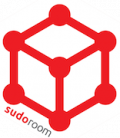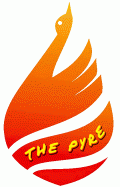Yesterday, the Facebook team announced their plan to help users battle “application spam,” describing recently-added features they’ve added that many of you should find pretty appealing. It’s a good thing, because the bevy of e-mails and invitations I’ve received in the past few months has been a real turn-off for the vast majority of “veteran” users. High school students and MySpace converts enthusiastically SuperPoke one another, adorn each others’ profiles with “Graffiti,” and rank the “Hotties” amongst their Friends (capitalized because Friendship on online social networks is quite distinct from friendship). Other Internet enthusiasts and thinkers promote charitable organizations, ask Questions of their profiles’ visitors, and incorporate their various online presences (on MySpace, SecondLife, Twitter, etc . However, those who’ve been with Facebook since the beginning (older college students and recent alumni) have a very different relationship with the site. Sure, we may SuperPoke and turn you into a vampire every once and awhile, but for the most part, Facebook serves to keep in touch with college friends scattered across the globe, see what’s come of our high school classmates, take nostalgic journeys through the hundreds of pictures tagged with our names (de-tagging when appropriate), and keep our various networks of old friends informed about our post-college lives.
. However, those who’ve been with Facebook since the beginning (older college students and recent alumni) have a very different relationship with the site. Sure, we may SuperPoke and turn you into a vampire every once and awhile, but for the most part, Facebook serves to keep in touch with college friends scattered across the globe, see what’s come of our high school classmates, take nostalgic journeys through the hundreds of pictures tagged with our names (de-tagging when appropriate), and keep our various networks of old friends informed about our post-college lives.
When Facebook began allowing anyone and everyone to join the site back in 2006 and added the News Feed, thousands of college students virulently protested: some quit the site completely, many joined Facebook Groups protesting the move, and practically everyone I know complained. In response, Facebook added a slew of privacy features, such as Limited Profiles (which I use liberally) and News Feed controls. With the advent of Applications, a similar wave of protest made itself evident through such groups as “fuck off… i don’t want to be a pirate/vampire/werewolf/zombie.” Nevertheless, the number of Application exponentially increased, growing increasingly manipulative and tricksy. Many applications, particularly quizzes, practically force users to invite friends in order to see their results, resulting in the rise of groups protesting viral applications. Once again, Facebook has responded.
Here’s a run-down of the new ways you can control your “Application-Spam:”
1. Block Applications instantly. Now, when you get an invitation for the latest useless, viral Application, you can check “Block Application” directly within the invite. Nevermore, you vampires and zombies! Go bite someone who cares!
2. Clear all “Requests.” I’m not the only one who simply ignores every invitation sent my way, allowing them to build up steadily on my homepage (currently, I have 64 pending invitations). Why spend the energy rejecting every single invitation? You can be sure I’ll be clicking the “Ignore All” button (located on the “Requests” page, at the top) as soon as I finish this post.
3. Applications must now inform you ahead of time if you’re obligated to invite Friends in order to get information or access content. It’s so very irritating to spend 15 minutes filling out a quiz, only to be told afterwards that you must invite Friends to see your results. Sneaky Applications are no longer allowed to do this.
4. Forcing users to send Invitations is no longer allowed. Did you install an Application, only to find yourself forced to send invitations to your Friends in order to use it? Report it by clicking “This Application is forcing me to invite friends.”
5. Opt-out of e-mail sent by Applications. New Requests will automatically present you with this option, and you can control e-mail sent by Applicatios you’ve already installed by going to the “Edit Applications” page.
6. Help Facebook weed out the garbage from the good stuff. Getting a lot of e-mails from one of your Applications? Mark it as spam, and Facebook will take note. Did an Application break the rule I mentioned in #3? Go to the App’s “About” page and report it to Facebook.
Though it took them awhile to get around to it, I must commend Facebook on once again listening to their users and providing tools for protection against this latest version of viral marketing. Now to spread the news and help empower you Facebookers out there!






 . However, those who’ve been with Facebook since the beginning (older college students and recent alumni) have a very different relationship with the site. Sure, we may SuperPoke and turn you into a vampire every once and awhile, but for the most part, Facebook serves to keep in touch with college friends scattered across the globe, see what’s come of our high school classmates, take nostalgic journeys through the hundreds of pictures tagged with our names (de-tagging when appropriate), and keep our various networks of old friends informed about our post-college lives.
. However, those who’ve been with Facebook since the beginning (older college students and recent alumni) have a very different relationship with the site. Sure, we may SuperPoke and turn you into a vampire every once and awhile, but for the most part, Facebook serves to keep in touch with college friends scattered across the globe, see what’s come of our high school classmates, take nostalgic journeys through the hundreds of pictures tagged with our names (de-tagging when appropriate), and keep our various networks of old friends informed about our post-college lives.